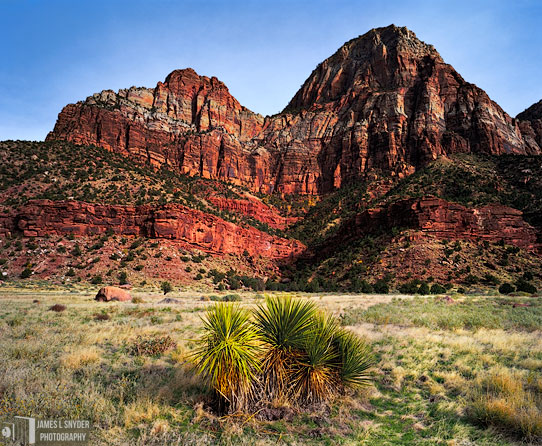

Near Zion Human History Museum, Zion National Park, UT, 11/6/2006
Here is a scene typical of the high desert landscape of Zion Canyon. Behind us is the north fork of the Virgin River, and before us is a Datil Yucca (Yucca baccata, or Banana yucca), an arid grassland meadow, and Bridge Mountain - a Navajo Sandstone butte. Saddleback-shaped Bridge Mountain is named for a spectacular free-standing natural formation called Crawford Arch or Bridge Mountain Arch. The arch is about three feet wide and 156 feet long! In medium to large prints of this photograph, Crawford Arch is plainly visible just right of top center. For years, visitors to Zion were told (incorrectly) that this span was a natural bridge - thus the mountain’s name. More recently the National Park Service named the formation Crawford Arch in honor of the William R. Crawford family who lived and farmed on their homestead below the mountain in the 1800s. When looking at this lone Yucca plant, it's hard to imagine that here was once the site of their two-storey home, smokehouse, alfalfa crops, and extensive fruit orchard! A member of the agave family, Datil Yucca blossoms each year, growing a large central stalk with waxy white flowers. When ripe, the banana-shaped fruit following the bloom was eaten, or dried and stored by the Native Americans in this region. They also ate the bulbous part of the plant's roots. Native Americans made sandals and rope from the tough fibers of the Yucca's leaves, and soap from the saponins in its roots.